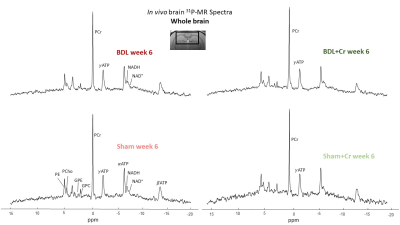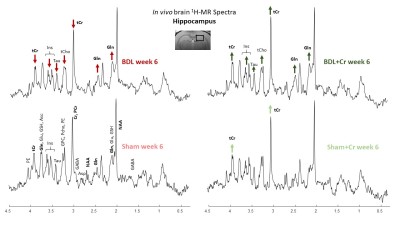Dunja Simicic1,2,3, Katarzyna Pierzchala1,2, Olivier Braissant4, Stefanita-Octavian Mitrea1,2, Dario Sessa5, Valerie McLin5, and Cristina Cudalbu1,2
1CIBM Center for Biomedical Imaging, Lausanne, Switzerland, 2Animal Imaging and Technology, EPFL, Lausanne, Switzerland, 3Laboratory of Fuctional and Metabolic Imaging, EPFL, Lausanne, Switzerland, 4Service of Clinical Chemistry, University of Lausanne and University Hospital of Lausanne, Lausanne, Switzerland, 5Swiss Center for Liver Disease in Children, University Hospitals Geneva, Geneva, Switzerland
1CIBM Center for Biomedical Imaging, Lausanne, Switzerland, 2Animal Imaging and Technology, EPFL, Lausanne, Switzerland, 3Laboratory of Fuctional and Metabolic Imaging, EPFL, Lausanne, Switzerland, 4Service of Clinical Chemistry, University of Lausanne and University Hospital of Lausanne, Lausanne, Switzerland, 5Swiss Center for Liver Disease in Children, University Hospitals Geneva, Geneva, Switzerland
Type-C hepatic encephalopathy is a complication of chronic liver disease. It is known that children are more affected by CLD than adult patients. Our aim was to test whether Cr-supplementation dampens the changes observed in CHE in a longitudinal model of CLD acquired in early childhood P15.

In vivo 31P-MR
spectra from whole brain (VOI=5x9x9mm3) acquired at week 6 after BDL
or sham surgery, each spectrum is from one animal.

In vivo 1H-MR
spectra from hippocampus (VOI=2x2.8x2mm3) acquired at week 6 after
BDL or sham surgery, each spectrum is from one animal. Spectra clearly show
increased tCr in both BDL+Cr and Sham+Cr. The positive effect of Cr treatment
on other osmolytes (Ins, Tau and tCho) is also visible on BDL+Cr spectrum.